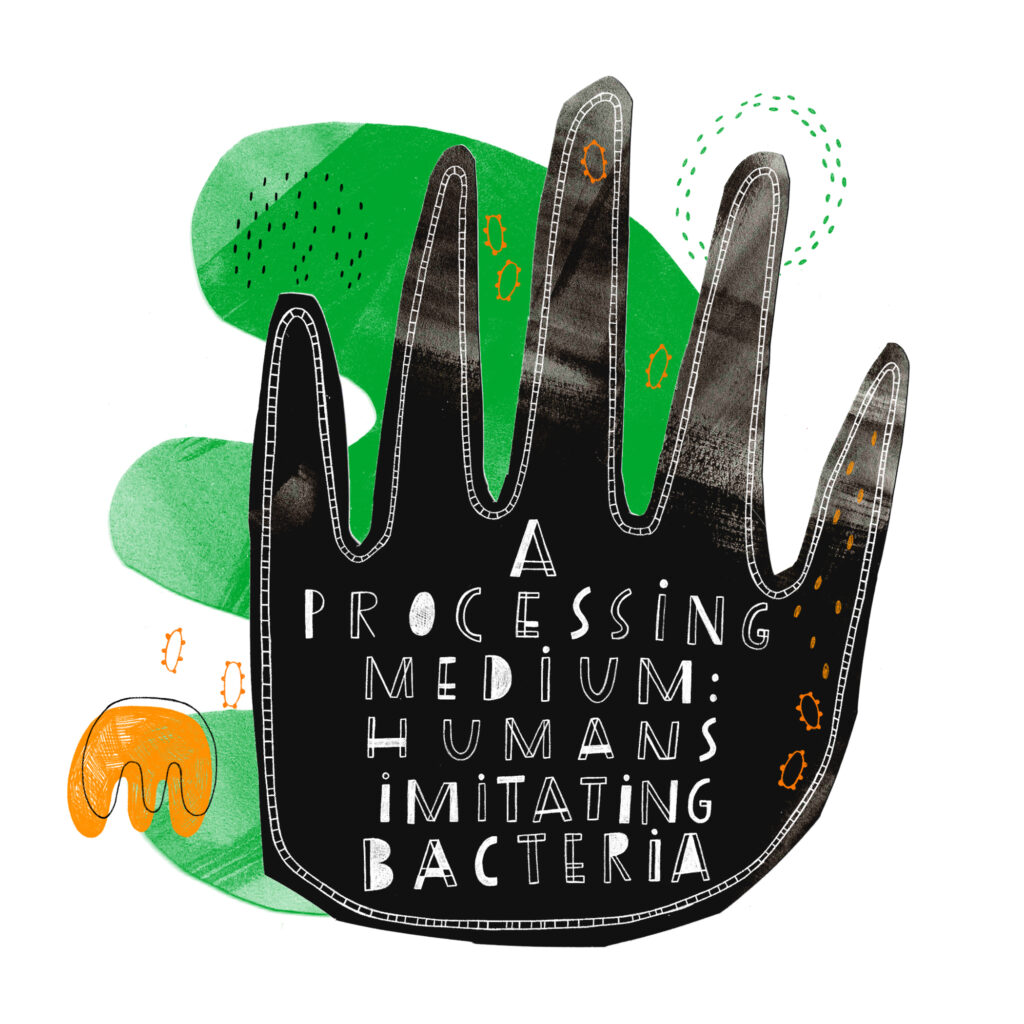A Processing Medium: Humans Imitating Bacteria

“A Processing Medium: Humans imitating Bacteria” is a project imagined and led by artist Sean Roy Parker, with support from Michelle Walker. Running over four days during the post-lockdown summer of July 2021, Sean and Michelle invited communities in Bootle and Granby to learn skills and gain knowledge surrounding fermentation, preserving surplus food and reducing food waste. Working with bacteria, together we produced delicious and sustainable foods: including rhubarb and carrot kimchi, lacto-fermented wild berry salsa and sauerkraut.
Running in both North and South Liverpool, the project touched on the movement of food in and around cities, and the importance of reducing this movement from global to local, sourcing from nearby places, solidarity and sharing resources. The four day’s worth of knowledge sharing was rounded up with a “meals for peels” event in Granby Winter Garden; where local chefs Yamm Tree and Valerie Watson invited the surrounding neighbourhoods to come and drop off their compostable waste in return for a free meal made from surplus veg. Concluding the project full circle, another “meals for peels” event took place in the May Logan Centre in Bootle, in the Autumn of 2021.
We produced a poster-zine which is an accumulation of all our learning, recipes and thoughts from the project for sharing with our wider community and friends.
Project Text by Sean Roy Parker
Our climate crisis is typified by humans maintaining separation from nature and ignorance of our entanglement in ecologies. In seeing ourselves at the top of the food chain, with our insatiable material needs driving us to environmental destruction, we uphold superiority over all other living beings; animals, insects, trees, bushes, plants, mycelium, yeast. Perhaps we would act differently if we appreciated the one lifeform that connects us all.
It covers every surface inside and out, keeping us and our more-than-human counterparts alive and thriving.
Bacteria.
There are millions and trillions of microscopic microbes –bodies that move beyond boundaries– in a teaspoon of soil or a pinch of your flesh. Our closest friends and allies, invisible to the naked eye yet shaping and changing the environment we live in. They are experts at chasing potential nutrients, breaking down complex materials into usable parts, working collectively to preserve surplus, and digesting organic matter for fuel. They communicate their needs non-verbally, shifting resources from the centre outwards, constantly pushing new frontiers.
The way bacteria work can be scaled up:
watching dendrobaena worms in compost
cooking and eating a meal with friends
mutual aid groups working in the community
Food is a necessity for human life and society: for maintaining health and well-being, for battling disease and injustice, and for sharing joy and solidarity. None of this would be possible without microbes – in our soil, on our hands, with our food, with our gut. By learning from and mimicking bacteria, we can begin to think like them, embodying a primal knowledge that holds the key to our existence. A Processing Medium is a survey of the complete lifecycle of a vegetable from the viewpoint of a microbe.
We’re with the seed in the soil, providing warmth, love and comfort.
We’re at the germination, celebrating new life where there was none.
We’re seeing the seedling grow, receiving warmth from the energy.
We’re attached to the harvest, tucked deep between the leaves.
We’re travelling in a cold van or plane or shipping container.
We’re sitting on a shelf, getting hungry and hiding from light.
We’re back on the road, meeting with others in a big bag.
We’re washed and rubbed, still clinging on for life.
We’re boiled and give ourselves up, making way.
We’re food for the next dominant species.
A Processing Medium: humans imitating bacteria – a project by Sean Roy Parker with Michelle Walker, curated and produced by Rule of Threes commissioned by Liverpool Biennial. Funded by NCLF to cultivate common ground.
This project takes inspiration from the 11th edition of Liverpool Biennial, the Stomach and the Port and the work of Jorgge Menna Baretto.